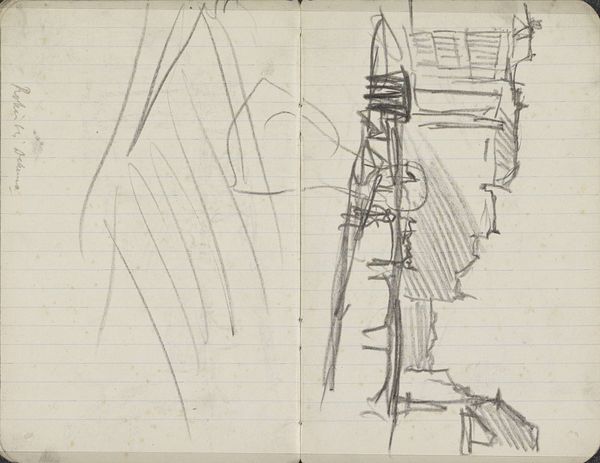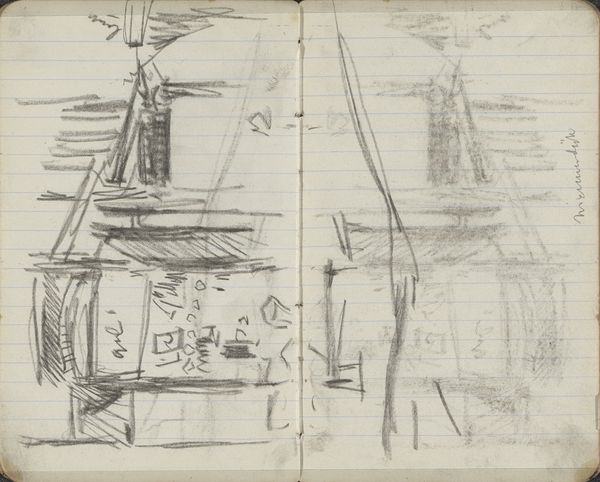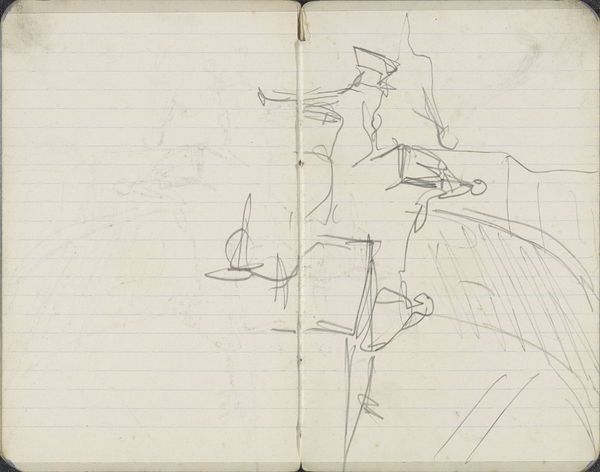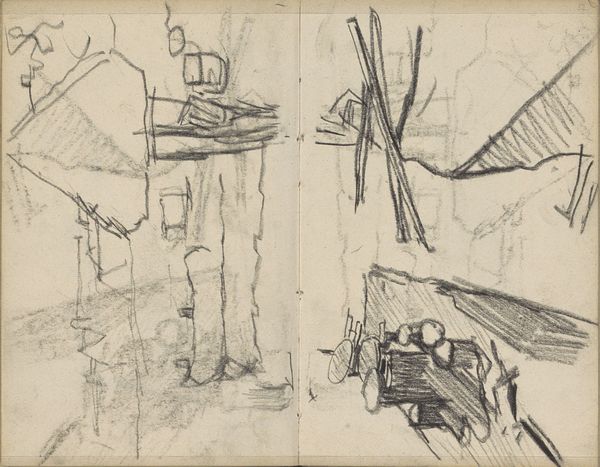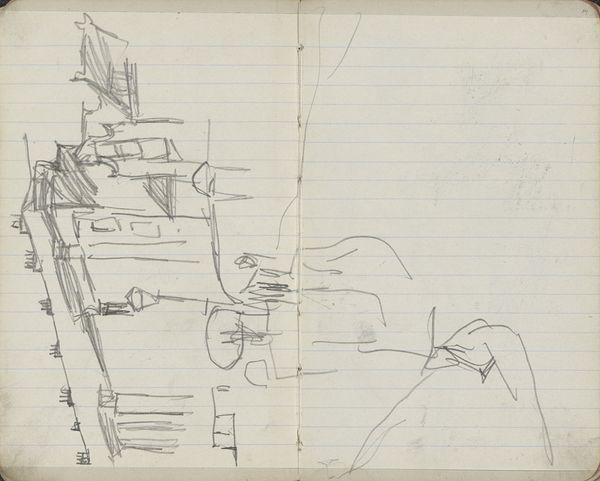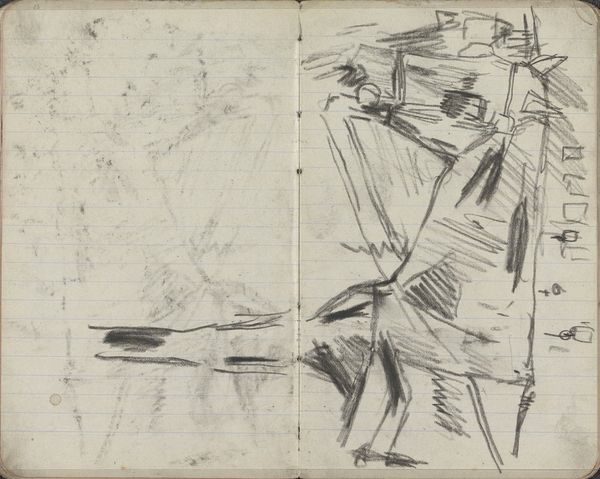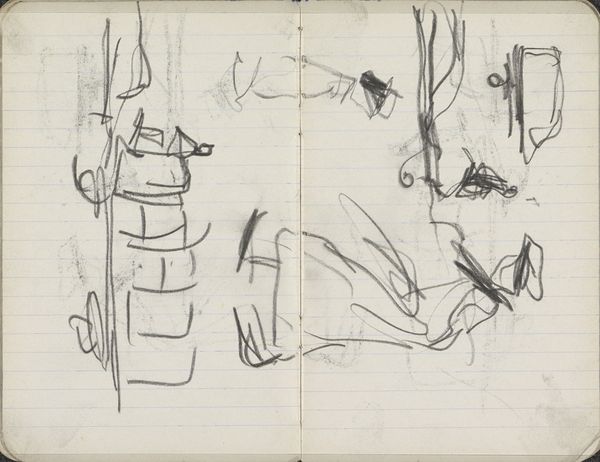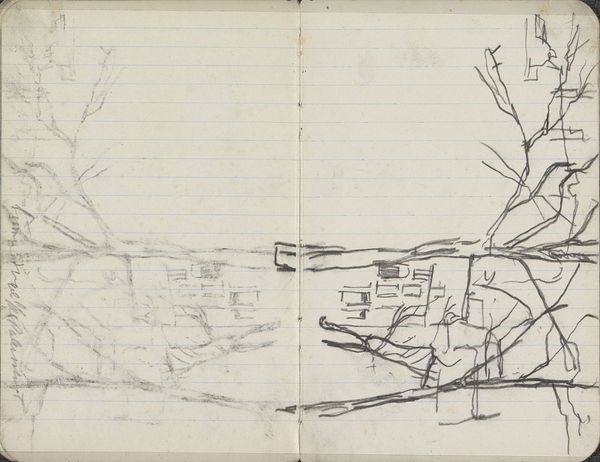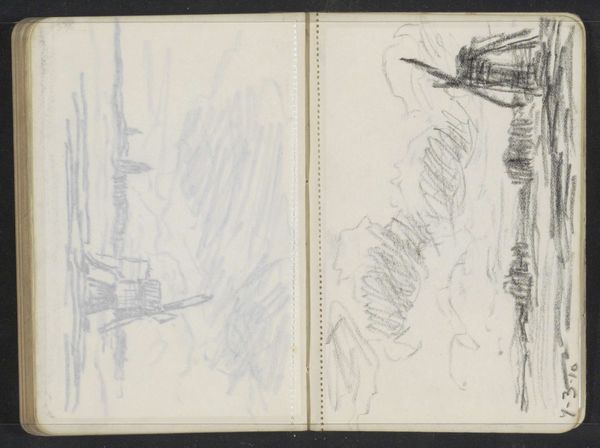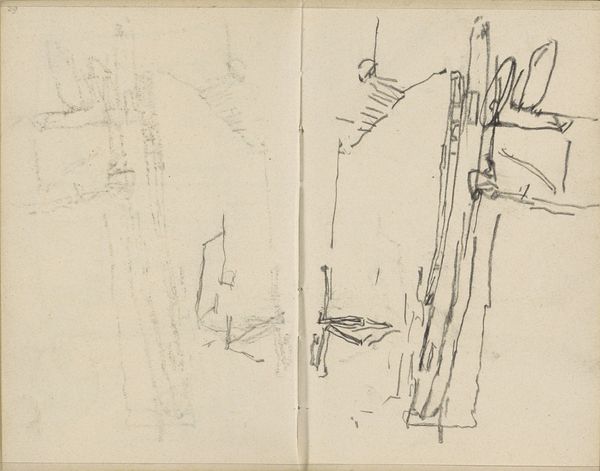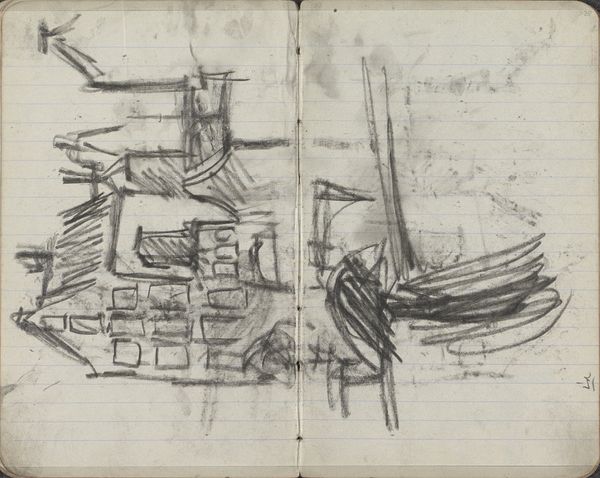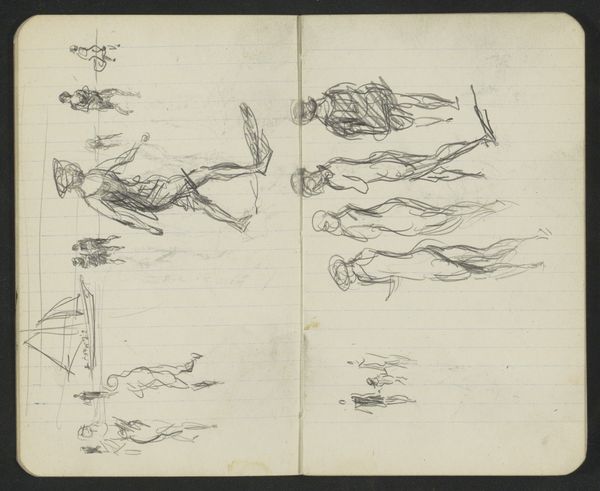
Gezicht op de Keizersgracht te Amsterdam ter hoogte van de Reguliersgracht 1895 - 1898
0:00
0:00
georgehendrikbreitner
Rijksmuseum
Copyright: Rijks Museum: Open Domain
Editor: This is "View of the Keizersgracht in Amsterdam at the Reguliersgracht" by George Hendrik Breitner, made between 1895 and 1898. It’s a pencil drawing on paper. I find it very skeletal and unfinished. What strikes you when you look at this drawing? Curator: For me, it's all about the means of production, isn't it? Here we see Breitner’s raw marks, the initial stages of capturing a scene. This isn't about finished perfection; it's about the immediate labor of seeing and recording. Consider the lined paper – a functional, everyday object, now the support for ‘art’. What does this suggest about traditional art boundaries? Editor: That’s interesting… almost like he is democratizing the whole art-making process. So you’re saying it is important where the materials come from and the accessibility of materials? Curator: Precisely. The use of pencil and readily available paper, indicates the accessibility and portability, implying the artist created the art within the city. Pencil, a humble tool, yet incredibly versatile. We can view this not just as a sketch, but a document of the artist’s working methods. The impressionistic touches indicate not only his observation skills but also his craftsmanship. Editor: So, is Breitner critiquing what materials 'high' art should be made from? Or elevating these modest materials by using them for fine art? Curator: He might be doing both, actually! It begs the question of what makes art 'valuable' in the first place. Is it the artist's skill? Or is it the intrinsic worth of the materials? This work shifts the focus towards the activity and the labor inherent in the creation. Editor: That makes me think differently about the sketch, and I wonder if these types of quick captures were also documenting and commenting on the growing urbanization, capturing a moment in time. Curator: Precisely! I think you got it! Considering both its means of creation and its contextual meaning is vital in considering the artist's broader impact on Amsterdam.
Comments
No comments
Be the first to comment and join the conversation on the ultimate creative platform.
